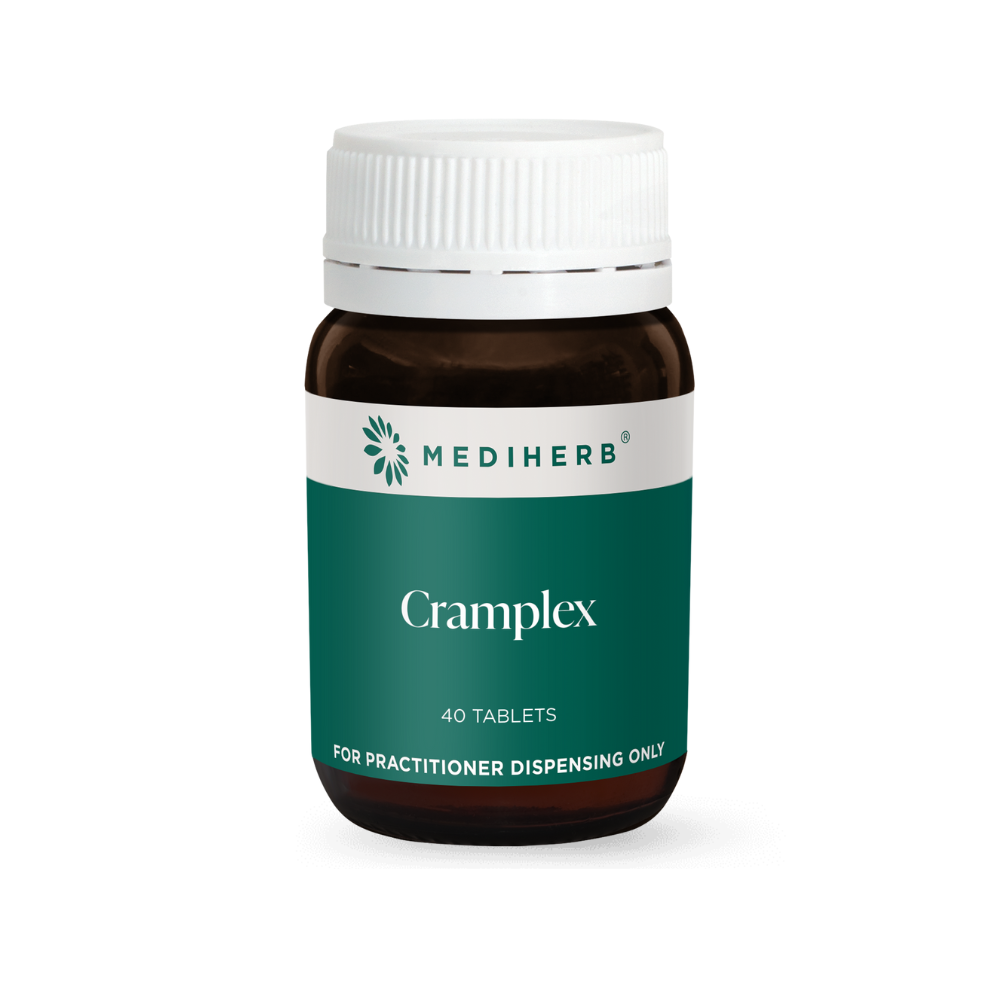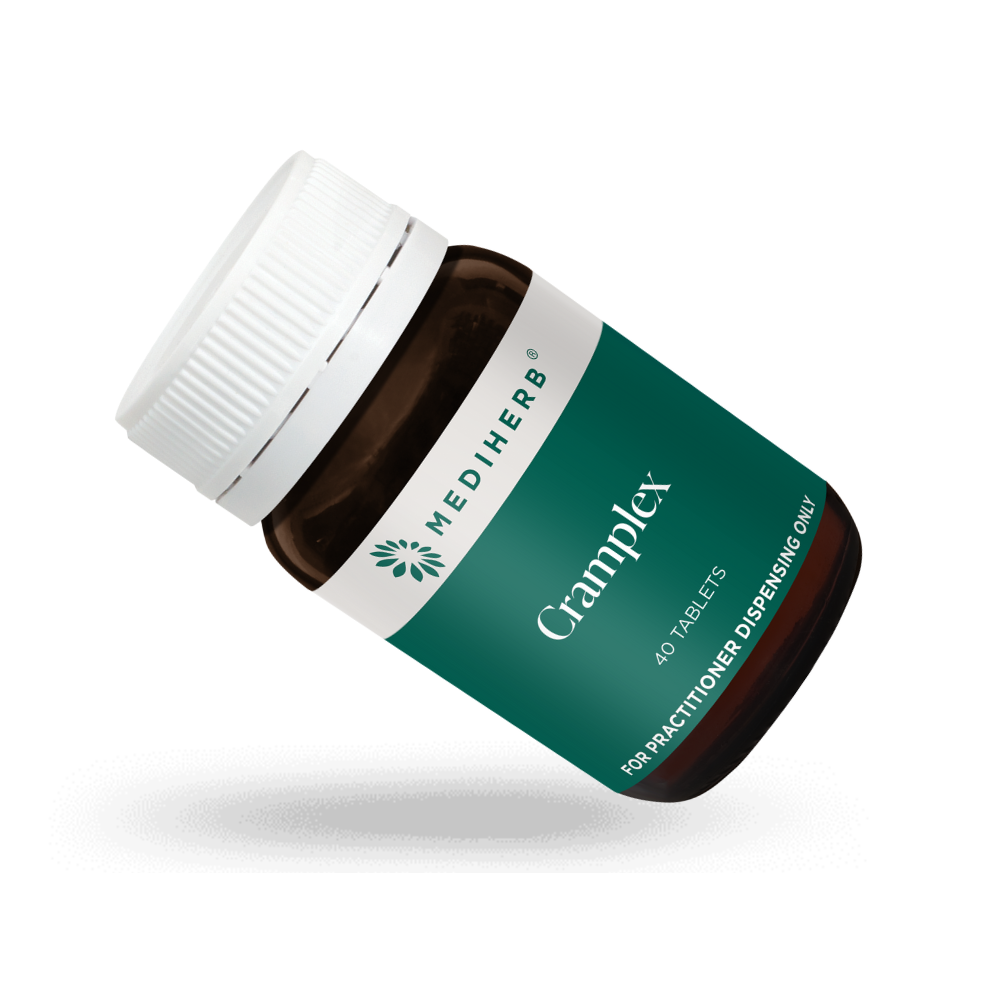Cramplex 40 Tablets
Couldn't load pickup availability
Relieve Menstrual Pain Naturally: Cramplex
Cramplex is a specialized combination of herbs traditionally used in Western herbal medicine to alleviate menstrual pain, cramping, and dysmenorrhoea. With key ingredients like Cramp Bark, Wild Yam root, and Ginger root, this formula provides effective relief from discomfort during menstruation. Vegan-friendly and free from common allergens, Cramplex is a natural approach to managing menstrual symptoms. Learn more about natural ways to ease menstrual pain in our blog.
Indications
- Cramp Bark, Wild Yam root, and Ginger root are traditionally used in Western herbal medicine to relieve menstrual pain, cramping, and dysmenorrhoea.
- Cramp Bark is traditionally used in Western herbal medicine to:
- Relieve muscle cramps and relax the nervous system.
- For its antispasmodic activity.
Dose
Adults: 3-4 tablets two times daily.
Ingredients
| Each tablet contains: | |
| Corydalis turtschaninovii (Corydalis) extract | 60 mg |
| Derived from tuber dry | 600 mg |
| Zingiber officinale (Ginger) extract | 800 mcL |
| Derived from rhizome dry | 400 mg |
| Rubus idaeus (Raspberry) Extract | 800 mcL |
| Derived from leaf dry | 400 mg |
| Dioscorea villosa (Wild Yam) extract | 800 mcL |
| Derived from root & rhizome dry | 400 mg |
| Viburnum opulus (Cramp Bark) extract | 800 mcL |
| Derived from stem bark dry | 400 mg |
Allergen Information
- No Added: Gluten, soya bean, milk, lactose, peanuts, tree nuts, fish, crustacea, corn, egg, sesame seeds, artificial sweeteners, colours or flavours.
- Vegan friendly.
Excipients
Calcium hydrogen phosphate dihydrate, colloidal anhydrous silica, hypromellose, magnesium stearate, microcrystalline cellulose, sodium starch glycollate.
Warning
- Do not use if pregnant or likely to become pregnant.
- Daily doses of dried Ginger over 4 g are contraindicated in patients who are already taking blood-thinning drugs such as warfarin or aspirin or who have an increased risk of bleeding. Exercise caution when taking doses of ginger below this.
- When prescribing Ginger, caution is advised in patients with gallstones.
- Contraindicated in patients taking nifedipine or crizotinib.
- Ginger or phenprocoumon should be used cautiously in patients taking antacids (it may decrease the effectiveness as ginger increases gastric secretory activity).
- Discontinue seven days before general anaesthesia.
- If patient symptoms persist, seek additional professional advice.

























